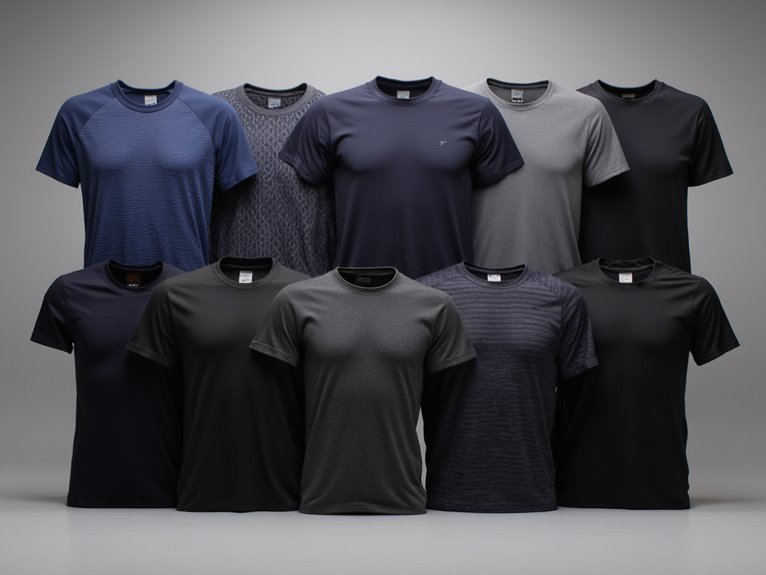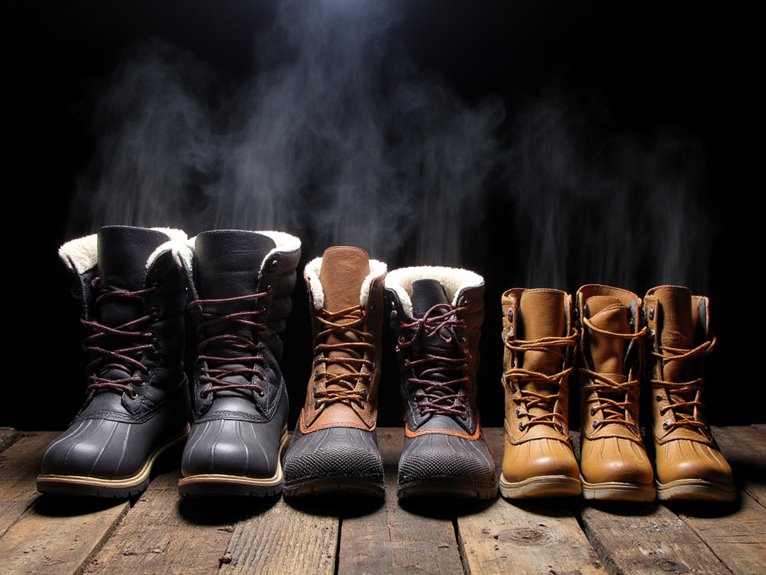Why Are Crocs Not Allowed in the Gym?
Crocs, with their porous and soft, foam-like material, are often prohibited in gyms and other institutions due to the significant hygiene and sanitation concerns they pose. The crevices and pores in Crocs provide an ideal habitat for microorganisms to thrive, making them a potential health hazard. Additionally, the soft material can harbor dirt, sweat, and other substances, further exacerbating the risk of contamination. By prohibiting Crocs, gyms can minimize the risk of bacterial and fungal infections, as well as unpleasant odors, and create a safer and healthier environment for everyone. Delve into the complexities of this issue further to uncover more.
We are supported by our audience. When you purchase through links on our site, we may earn an affiliate commission, at no extra cost for you. Learn more. Last update on 16th December 2025 / Images from Amazon Product Advertising API.
Hygiene and Sanitation Concerns
Crocs' porous and soft, foam-like material makes them a breeding ground for bacteria, fungi, and other microorganisms, posing significant hygiene and sanitation concerns in certain environments.
This is particularly problematic in settings where cleanliness is paramount, such as healthcare facilities, food establishments, or gyms.
The crevices and pores in Crocs provide an ideal habitat for microorganisms to thrive, making them a potential health hazard.
In addition, the soft material can harbor dirt, sweat, and other substances, further exacerbating the risk of contamination.
As a result, many institutions and businesses prohibit the use of Crocs to maintain a clean and safe environment.
Open-Toe Shoes and Liability
In addition to hygiene concerns, open-toe shoes like Crocs also pose a significant liability risk in certain settings, particularly in industries where heavy machinery, hot surfaces, or hazardous materials are present.
This is because open-toe shoes provide little to no protection for the feet, leaving them vulnerable to injury.
In a gym setting, where weights and heavy equipment are omnipresent, the risk of foot injury is heightened.
By banning open-toe shoes like Crocs, gym owners can mitigate the risk of liability and create a safer environment for their patrons.
This precautionary measure helps protect both the gym and its members from potential lawsuits and injuries.
Gym Equipment Damage Risks
In the realm of gym equipment, the risk of damage is ever-present, particularly when users wear Crocs.
Dropping heavy weights can cause significant damage to equipment and flooring, while exposed metal edges on machines can be easily damaged by the soft, flexible material of Crocs.
Dropping Heavy Weights
Risks of damage to expensive gym equipment are heightened when heavy weights are recklessly dropped, compromising the safety of both the machinery and the people around it.
Dropping heavy weights can cause significant damage to the equipment, leading to costly repairs or even replacement.
Additionally, it can also lead to injuries, as the weights can bounce or roll out of control, putting nearby gym-goers at risk.
Gym-goers must take responsibility for their actions and handle weights with care, using proper lifting and lowering techniques to prevent accidents.
Exposed Metal Edges
Beyond the hazards of dropped weights, gym equipment is also susceptible to damage from exposed metal edges, which can lead to costly repairs and downtime.
The soft, porous material of Crocs can easily get caught in the metal edges of gym equipment, causing damage to both the shoe and the machine.
In addition, the rough texture of Crocs can also scratch or scrape the metal surfaces, compromising their integrity.
This risk is particularly high on machines with moving parts, such as treadmills or stationary bikes, where the constant friction can cause the Crocs to wear down and get stuck.
Slip and Fall Accidents
Slip and fall accidents are a significant concern in various settings, and Crocs' design can exacerbate this issue.
The smooth, porous surface of Crocs can make them particularly prone to slipping on wet floors, increasing the risk of accidents.
Additionally, the lack of traction on these shoes can lead to falls, especially on smooth or polished surfaces, highlighting the need for caution and alternative footwear options.
Wet Floor Hazards
Frequently, wet floors in commercial establishments, such as restaurants and healthcare facilities, become a breeding ground for slip and fall accidents, resulting in injuries and lawsuits.
The same hazardous conditions can arise in gyms, where sweat, water, and cleaning products can create slippery surfaces. In such environments, the risk of accidents increases, especially when patrons are engaged in physical activities that require quick movements.
As a precautionary measure, gym owners and managers must verify that floors are regularly cleaned and dried to prevent slippery conditions. Proper signage, non-slip coatings, and adequate lighting can also help minimize the risk of slip and fall accidents.
Traction Issues
What role do footwear choices play in exacerbating traction issues that can lead to devastating slip and fall accidents?
The answer lies in the design and material of Crocs, which can compromise grip on gym floors.
The soft, porous, and smooth surface of Crocs can lead to reduced traction, increasing the likelihood of slipping on wet or oily surfaces.
This is particularly problematic in gyms, where sweat, water, and cleaning products can create hazardous conditions.
When combined with the high-impact nature of gym activities, the risk of serious injury from falls increases dramatically.
Unstable Footing and Balance
Maintaining stable footing and balance is crucial in various settings, and Crocs' design flaws can compromise this stability, making them a hazard in certain environments.
The soft, flexible material and loose fit of Crocs can cause the foot to slide around, leading to loss of balance and increased risk of falls.
This is particularly concerning in areas with smooth or slippery surfaces, such as gym floors, where a single misstep can result in serious injury.
Additionally, the lack of arch support and ankle stability in Crocs can exacerbate balance issues, making it even more challenging to maintain stable footing.
Weightlifting and Heavy Lifting
In weightlifting and heavy lifting exercises, the absence of secure footing and ankle support in Crocs can lead to catastrophic consequences, including dropped weights and injuries to oneself or others.
The soft, porous, and lightweight material of Crocs provides little stability, making it difficult to maintain balance and generate power during heavy lifts.
This lack of support increases the risk of accidents, particularly when handling heavy weights or performing complex lifts.
In addition, the loose fit of Crocs can cause the foot to shift during exercise, compromising form and increasing the risk of injury.
Moreover, many gyms prohibit the use of Crocs during weightlifting and heavy lifting exercises, prioritizing safety above all else.
Cross-Contamination of Germs
As we examine the reasons behind the prohibition of Crocs, it becomes clear that cross-contamination of germs plays a significant role.
The surfaces of these shoes can harbor a multitude of germs, which can then be transferred to gym floors, posing a significant risk of contamination.
In moist environments, bacteria thrive, and the use of Crocs can exacerbate this issue, making them a potential health hazard.
Germs on Shoe Surfaces
With millions of microorganisms thriving on every square inch of their surface, Crocs provide an ideal breeding ground for germs, which can then be tracked into hospitals, restaurants, and other sensitive environments, posing a significant risk of cross-contamination.
The porous and soft material of Crocs allows germs to penetrate deep into the shoe, making it difficult to clean and disinfect.
This creates a perfect storm for the spread of germs, as the shoes can harbor bacteria, viruses, and fungi, which can then be transferred to other surfaces and people.
The potential consequences of this cross-contamination are dire, making it essential to take measures to prevent it.
Gym Floor Contamination Risk
The gym floor, a high-traffic area prone to moisture and humidity, is particularly susceptible to germ contamination when individuals wear Crocs, which can introduce and spread germs to the floor and surrounding surfaces.
The porous and open-cell structure of Crocs provides an ideal breeding ground for germs, making them a potential vector for cross-contamination.
As gym-goers move around, they can unknowingly track germs from their shoes to the floor, equipment, and mats, creating a breeding ground for illness-causing microorganisms.
This risk is amplified in areas with high humidity and moisture, such as around swimming pools, showers, and locker rooms.
Bacteria in Moist Environments
Moist environments, such as pool decks and locker rooms, create an ideal incubator for bacteria growth, allowing germs to multiply rapidly and increasing the risk of cross-contamination.
This is particularly concerning in gyms, where members share equipment and come into close proximity with one another.
Bacteria like E. coli, MRSA, and Staph aureus thrive in these conditions, putting individuals at risk of infection.
The presence of Crocs, with their porous and absorbent material, can exacerbate this issue by harboring bacteria and facilitating the spread of germs.
Gym Floor Damage Prevention
Damaging gym floors is a costly and time-consuming problem that many facility managers face, and Crocs' soft, porous material can exacerbate this issue.
The porous nature of Crocs allows dirt and debris to become trapped, which can then be ground into the floor, causing scratches and damage.
Additionally, the soft material can leave scuff marks on the floor, requiring additional maintenance to clean.
By prohibiting Crocs in the gym, facility managers can reduce the risk of floor damage and subsequent repair costs.
This preventative measure helps maintain a safe and clean environment for gym-goers, while also protecting the facility's investment in their flooring.
Unhygienic Materials and Odors
Crocs' porous material, which is often a breeding ground for bacteria and fungi, can harbor unpleasant odors and create unhygienic conditions in close quarters, such as gyms and fitness centers.
The holes and crevices in Crocs provide an ideal environment for microorganisms to thrive, making them a haven for germs and bacteria.
When worn in a gym, these germs can be transferred to equipment and surfaces, posing a risk to the health and well-being of other gym-goers.
Additionally, the pungent smells emanating from Crocs can be distracting and unpleasant for those around them, disrupting the overall gym experience.
Gym Policy and Membership Rules
Gym management often incorporates strict footwear policies into their membership rules to maintain a clean and healthy environment, ensuring a pleasant experience for all patrons.
By prohibiting Crocs and similar shoes, gyms can minimize the risk of bacterial and fungal infections, as well as unpleasant odors. This policy is often clearly outlined in membership agreements and posted signage, making it essential for members to adhere to these rules.
Footwear restrictions: Many gyms explicitly prohibit open-toed shoes, sandals, and Crocs to maintain a clean and safe environment.
Hygiene standards: Gyms may have specific cleaning and disinfection protocols in place to minimize the spread of germs and bacteria.
Member responsibility: Gym-goers are expected to adhere to these policies, taking an active role in maintaining a clean and healthy environment for everyone.




